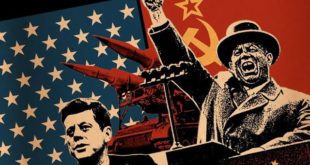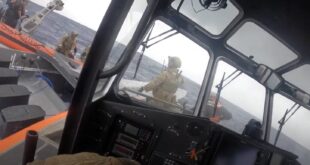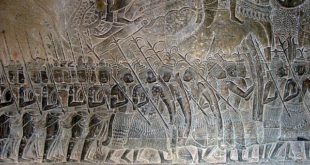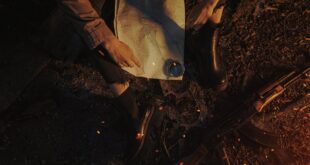
McVeigh was responsible for bombing the Oklahoma City building on April 19, 1995.
On the morning of April 19, 1995, two men committed an unthinkable act of terror against their own country, detonating a bomb outside the Alfred P. Murrah federal building in Oklahoma City. That bomb killed 168 people, including 19 children. Hundreds more were injured. Thousands of lives transformed.
That day showed all of us, in the starkest possible way, that hatred and intolerance for the values we all share could come from within our own country … from people we grew up with, who went to our schools, who were our neighbors.
The FBI’s OKBOMB investigation remains one of the largest and most complex cases the FBI has ever undertaken. Over 32 months, the FBI logged more than one million hours of investigative work through the OKBOMB task force. Investigators conducted more than 28,000 interviews, collected nearly 3.5 tons of evidence, and searched one billion records. And in the end, working alongside our partners across all levels of government, we brought to justice the men who were responsible for that despicable attack. FBI Director Christopher Wray
Jim Norman, Case Agent, Oklahoma City BombingInvestigation
Jim Norman describes events leading up to the capture to Timothy McVeigh for the bombing of the Alfred P. Murrah Federal Building in Oklahoma City.
We found out that an Oklahoma highway patrol trooper had made an inquiry on Tim McVeigh within about 90 minutes of the bombing. So we had one of the people working on our taskforce, an ATF agent named Mark M. contact highway patrol and identify the person who’s badge number was in that inquiry.
Because when you make an inquiry you have to list an identifier for yourself as a law enforcement official. So he found out that that badge number belonged to a trooper named Charlie Hanger.
And so once we had Hanger’s name we had someone contact him and they found out that Hanger had been heading south toward Oklahoma City based on a highway patrol dispatcher call for all available troopers to head to Oklahoma City to assist. He had gotten a discontinue. He was about 62 miles north of Oklahoma City and he turned around in the median on Interstate 35 and as he is starting to head back north he is passed by this yellow Mercury Marquis that’s missing its rear license plate. And so he pulls that car over and the driver gets out of the car and Hanger has to order him to stay by the door of his car.
So Hanger gets out, tells the guy to back up toward him and as McVeigh is backing up toward him he notices that McVeigh has a bulge under his left jacket and he reaches out and grabs it and McVeigh says it’s a gun and it’s loaded and Hanger has his gun next to McVeigh’s head and says, “so is mine.” And he relieved McVeigh of his gun, which was loaded with those rounds that can shoot through an armored vest. Once he had that gun and a knife that McVeigh had hidden on his person, he took McVeigh into custody and took him to the Noble County jail in Perry, Oklahoma.
So our investigator asked Hanger what happened to him. He said, “I don’t know. He may still be in custody; he may not.” So one of our investigators contacted Sheriff Jerry Cook and talked to him and he said, “Well McVeigh is in custody, but he’s going to be released within probably an hour.” So we put a federal hold on him and at that point myself and several other agents got into a helicopter and flew up to Perry and when we got up there myself and another agent interviewed the different people that had been in McVeigh’s cell.
We were asking them questions. You know, “Has McVeigh say anything? Did he comment on the bombing or anything of that nature?” They said no he was just attentive to the radio that was giving updates on what was going on with the bombing investigation. Finally McVeigh was brought into an office that Sheriff Cook gave us and I asked McVeigh, I said, “Do you know why we are here?” He said, “That thing in Oklahoma City, I guess.” And I said what he meant by that? And he said “That bombing, I want an attorney.”
One of the really beneficial things of Trooper Hanger taking him into custody was the fact that when they lodged him in the Noble County jail, they collected all of his clothing and put it in paper bags. When we sent that clothing back to the FBI Laboratory and they did a chemical analysis test on the clothing, they determined that he was basically the explosive equivalent of a powdered sugar doughnut. He had PETN all over his clothing.
It’s still the defining moment in Oklahoma City. When you try to talk about when something happened—let’s see, that was before the bombing or that was after the bombing? It’s a measure of time like BC and AD. Throughout the country, news stories went in different directions and they didn’t keep having that, but in Oklahoma City they did.

Video Barry Black: I’m Barry Black. I’m a retired master bomb technician with the FBI.
I retired after a little over 31 years in the Bureau.
Slide Text: Special Agent Barry Black was the newest bomb technician in the FBI’s Oklahoma City Field Office when an explosion rocked the Alfred P. Murrah Federal Building on the morning of April 19, 1995.
Black joined fellow investigators, evidence response teams, and first responders at the blast site to assess the damage and determine what happened.
Black: This was really the first bombing case I worked.
So I arrived on scene. I got as close as I could without getting into the debris field and started doing what we’re trained to do, which is an initial assessment to try to determine if it was a bombing or in fact a plane crash or a gas main explosion. And of course the large crater and the debris field are immediate indications.
Slide Text: Following that tragic day, Black and the OKBOMB task force uncovered more than three tons of evidence that ultimately led to the convictions of Timothy McVeigh and his co-conspirators.
Twenty-five years later, the nation still remembers the deadly act of homegrown terrorism that took lives of 168 people, including 19 children.
Black: This was a horrific event. This happened in my backyard. You know, literally my wife was in the building. She left two minutes before the detonation. I knew people that were killed and injured in the building. It’s left a mark here, and the city has grown, but it’s part of the history.
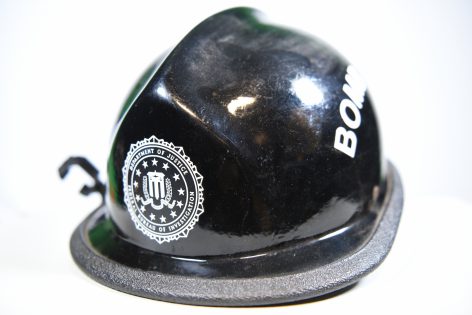
The protective hard hat worn by FBI Oklahoma City Special Agent Barry Black during the recovery and investigation of the Oklahoma City bombing.
Twenty-five years after the deadly bombing that took the lives of 168 people, retired Special Agent Barry Black provides a firsthand account of investigating the Oklahoma City case.
 Soldier of Fortune Magazine The Journal of Professional Adventurers
Soldier of Fortune Magazine The Journal of Professional Adventurers


